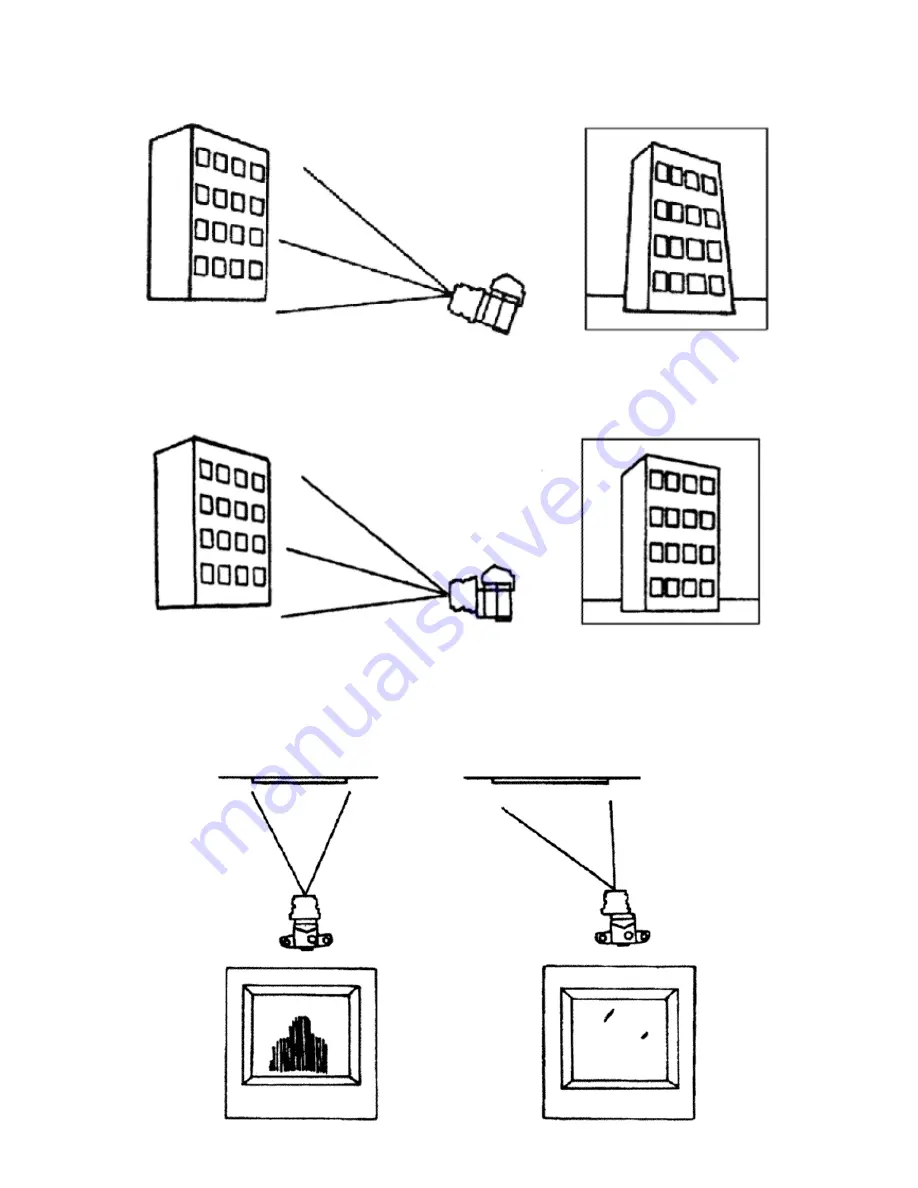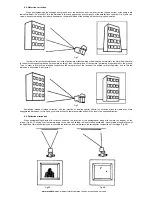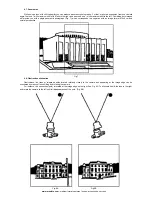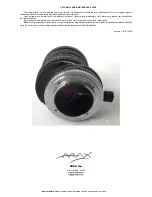
www.araxfoto.com
- medium format cameras, lenses, accessories , services
4.5. Distortion correction
When photographing high buildings from ground level, the distances from the lens from the top and bottom of the subject are
radically different. As a result of this, the distortion in this case appears as a convergence of the parallel lines upwards (Fig. 4), and vice
versa: when photographing from above downwards, the parallel sides of the building will be converging downwards.
Fig.4
In order to correct such distortion do not incline the camera either upwards or downwards, but maintain the film plane in parallel
to the object being photographed (for example, building), thus that film plane of the camera is situated at right angles to the ground.
Then, in order to achieve the intended composition the optical block of the lens shall be shifted vertically upwards, due to this the
distortion is eliminated. See Figure 5.
Fig.5
Sometimes instead of image correction, with the intention of creating special effects, the occasion arises to create even more
exaggerated distortions. In this case, you would incline the camera upwards and shift the lens in the opposite direction.
4.6. Reflection elimination
When photographing objects with reflective surfaces, the reflection of the photographer along with camera can appear on the
image. (Fig. 6
А
). Carrying over the camera angle to one side and shifting the lens to the opposite side, while retaining the parallelism of
the object and film planes allows you to eliminate the reflection and still preserve the rectangular composition of the image (Fig. 6B).
Fig.6
А
Fig.6B









